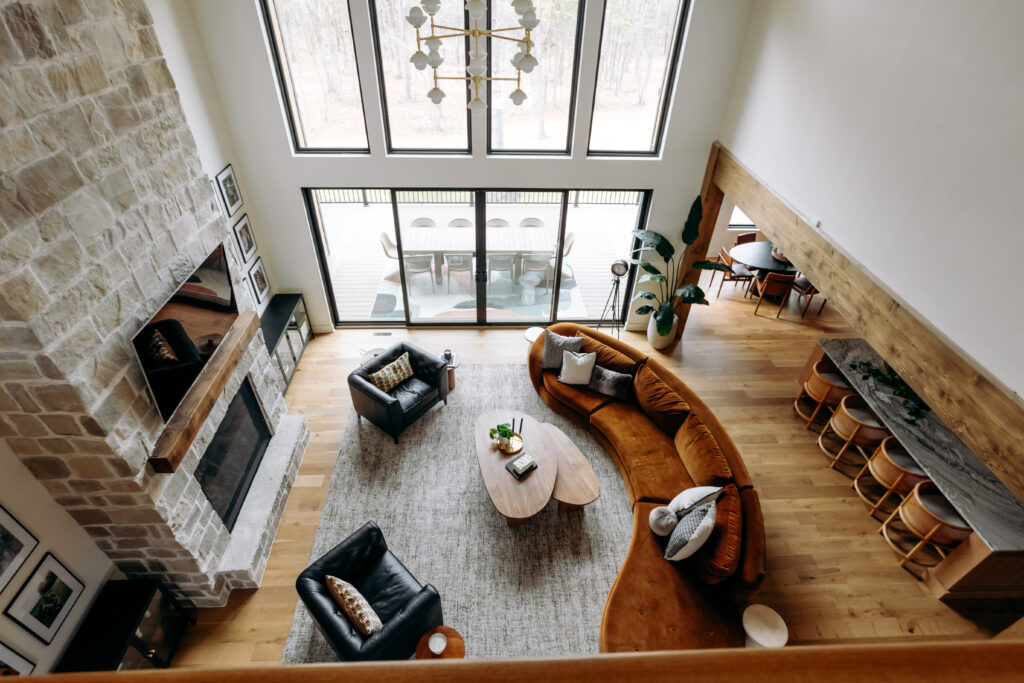
When you’re building a home, one of the most critical aspects of the design process is creating a floor plan that works for how you live. It’s easy to get caught up in aesthetics, but at the end of the day, the most important part of your floor plan is function.
Sure, I want your dream home to look amazing, but more importantly, I want it to improve your daily life. That’s why it’s essential to design a home that serves you and your family—not just in appearance, but in how it feels and functions every day.
So, how do you ensure your floor plan is functional for your lifestyle? Let’s walk through some of our key design pillars that serve as a checklist when planning your layout:
1. The People You Share Your Home With
Start by thinking about the people who live in your home. Do you have kids? Do you often host guests? Are you living with extended family or planning for the future? The people you share your home with will have a huge impact on how you design your floor plan.
– If you have young children, consider how you want to keep an eye on them. Do you want the kitchen to open into the living room so you can keep track of everyone while cooking?
– If you often have overnight guests, do you need an extra bedroom or guest suite with privacy?
– Are you thinking about aging in place or accommodating older relatives? A single-story floor plan might be more functional for long-term living.
2. Space and Storage for Your Belongings
Let’s be real—stuff can pile up fast! That’s why storage is such a critical part of functional design. Think about how much storage you’ll need for your belongings after you’ve decluttered, of course!
– Do you need large closets, built-in shelving, or a spacious mudroom to keep things organized?
– Do you have hobbies or equipment (like bikes, kayaks, or tools) that require extra storage space?
– How much kitchen storage do you need for appliances, dishware, and groceries?
A functional floor plan ensures there’s space for everything, so your home stays organized and clutter-free.
3. Flow: How You Use Your Space
Next, consider the flow of your home. Think about how you and your family naturally move through your daily routines and how your floor plan can support that.
– Do you spend most of your evenings hanging out in the kitchen? An open concept might be a good option, allowing for easy interaction between the kitchen, dining, and living areas.
– Do you need a quiet space to work from home? Make sure you include a home office or a designated workspace that’s tucked away from high-traffic areas.
– If you enjoy hosting large gatherings, an open floor plan that connects multiple rooms could create the perfect entertaining space.
The key is to design a home that supports your lifestyle, whether that’s cozy family nights in or big celebrations with friends.
4. Incorporating Natural Light
If natural light is important to you, don’t forget to incorporate it into your floor plan! Think about where you can add large windows to flood your main living spaces with light.
– Place windows in high-traffic areas like the kitchen, living room, and dining room to create bright, airy spaces.
– Consider your home’s orientation and where the sunlight hits throughout the day to maximize light in your favorite rooms.
– Skylights or floor-to-ceiling windows can also add extra light and a sense of openness.
Natural light doesn’t just improve the look of your home—it can improve your mood and overall well-being, making your space feel more inviting and comfortable.
Final Thoughts
The best way to ensure your new home serves your family’s needs is to think about function first. A beautifully designed floor plan isn’t just about how it looks—it’s about how it works for you day in and day out.
So, take the time to think through your lifestyle, how you move through your space, and what you need to feel comfortable and organized. By incorporating these considerations into your floor plan, you’ll create a home that truly works for the way you live.
Need help communicating these ideas to your architect? Comment FLOOR PLAN below, and I’ll send you a great reference to guide you through the process!
